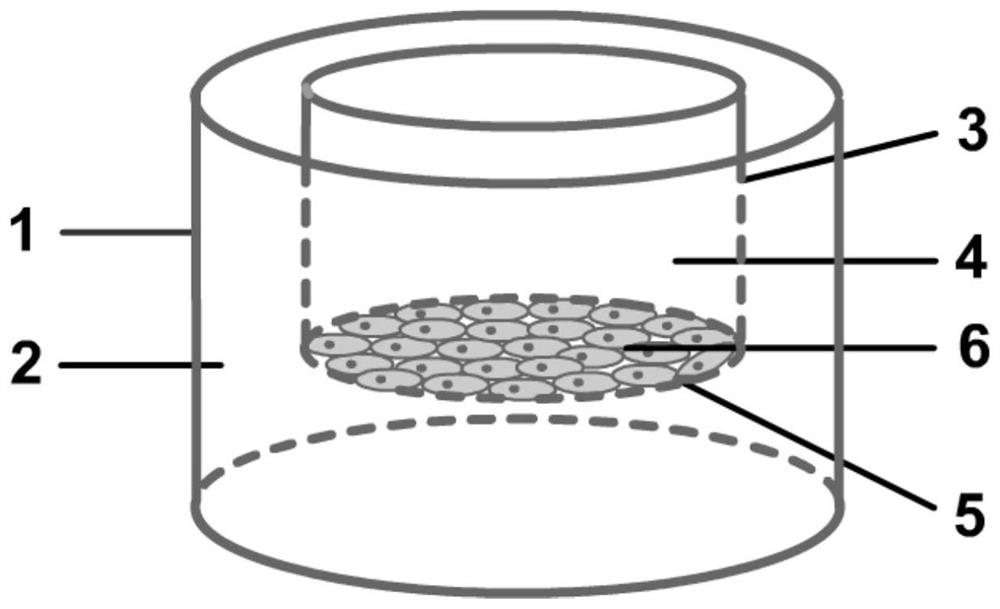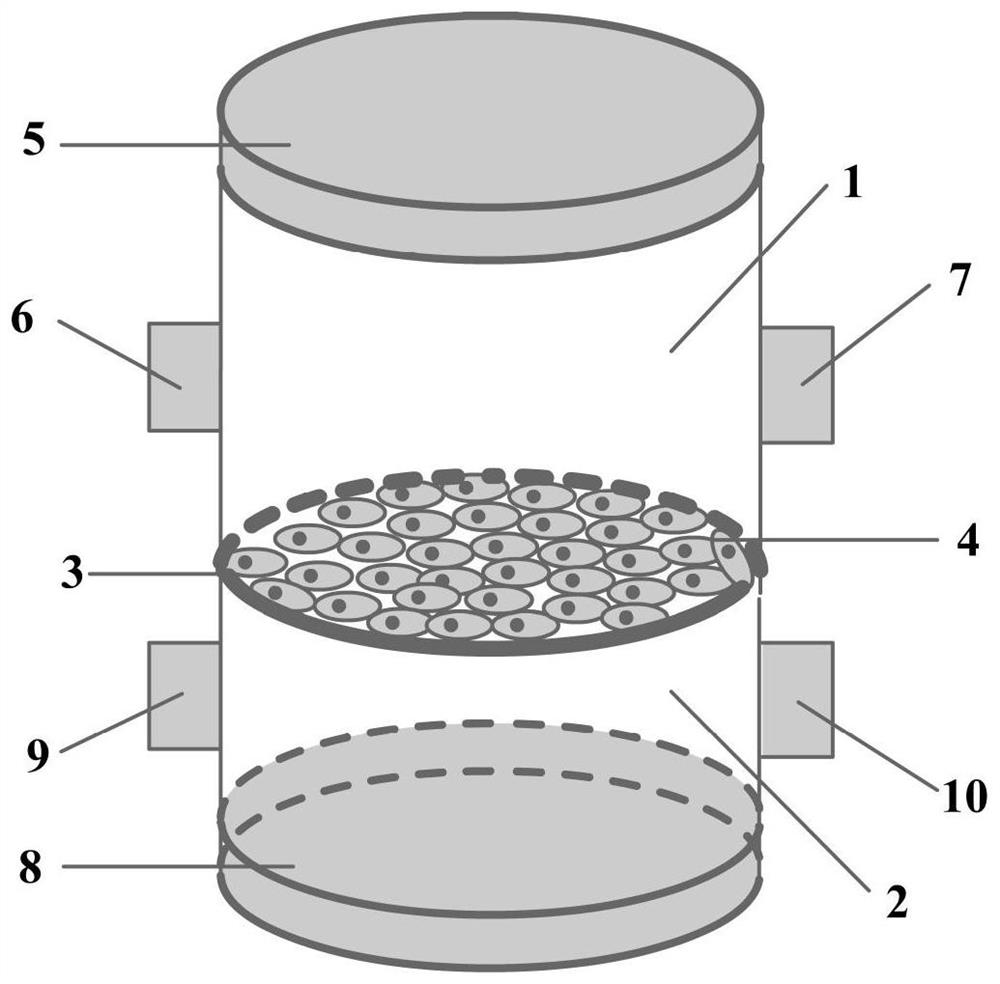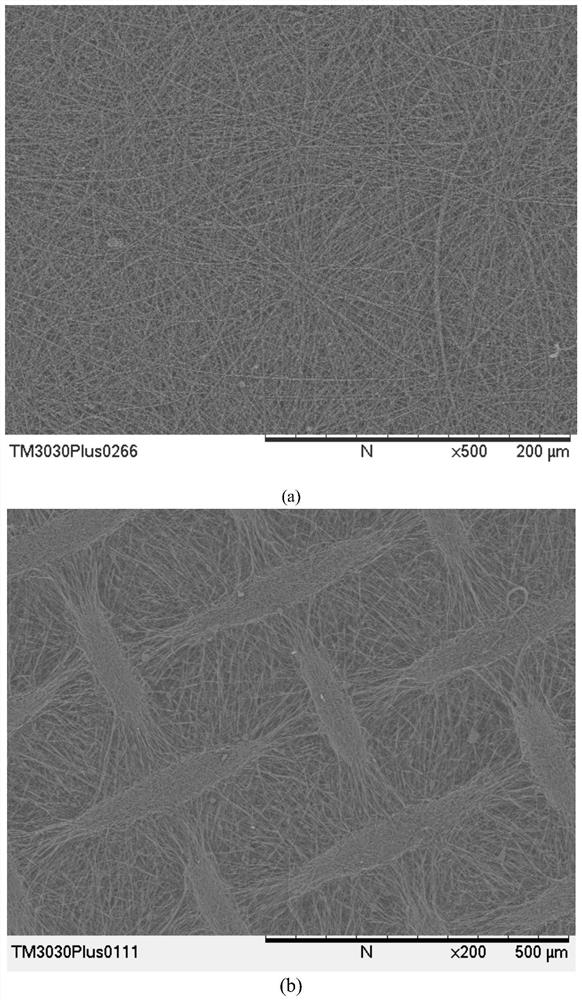An in vitro intestinal model based on primary intestinal cells and its construction method and application
An intestinal cell and construction method technology, applied in the field of in vitro intestinal model based on primary intestinal cells and its construction, can solve the inconvenience and inconvenience of the absorption, transport, metabolism and bioavailability of drugs and nutrients. It can well simulate the problems of intestinal interface absorption and difficult separation of stem cells, so as to achieve the effect of improving adhesion and growth performance, ideal stability and repeatability, and accurate evaluation.
- Summary
- Abstract
- Description
- Claims
- Application Information
AI Technical Summary
Problems solved by technology
Method used
Image
Examples
Embodiment 1
[0046] Example 1. Using electrospun cellulose acetate nanofiber membrane as the carrier material of primary intestinal cells to construct an in vitro intestinal model
[0047] In vitro intestinal models such as figure 1 As shown, including an outer container 1 and an inner container 3, the electrospun cellulose acetate nanofiber membrane material 5 with an average fiber diameter of 180 nm is fixed in the middle of the upper and lower chambers formed by the outer container 1 and the inner container 3 as the upper and lower chambers. Compartment material. The unpatterned morphology of electrospun cellulose acetate nanofibrous membrane materials such as image 3 As shown in (a), the patterned pit structure with a diameter of about 250 μm is as follows image 3 (b) shown.
[0048] The separation of small intestinal crypt cells is as follows: take the primary intestinal segment, wash it, cut it into pieces of about 1mm, transfer it into a 15ml centrifuge tube, add 10mL of EDTA (...
Embodiment 2
[0051] Example 2. Constructing an In vitro Intestinal Model Using Electrospun Chitosan / Collagen Nanofiber Membrane as the Carrier Material of Primary Intestinal Cells
[0052] In vitro intestinal models such as figure 1 As shown, it includes an outer container 1 and an inner container 3, and an electrospun chitosan / collagen nanofiber membrane material 5 with an average fiber diameter of 700 nm is fixed in the middle of the upper and lower chambers formed by the outer container 1 and the inner container 3 as the upper and lower chambers As for the interlayer material of the chamber, the electrospun chitosan / collagen nanofiber membrane material has pits of about 50 μm.
[0053] The separation of large intestine crypt cells is as follows: take the primary intestinal segment, clean it, cut it into pieces of about 1mm, transfer it into a 15ml centrifuge tube, add 10mL of EDTA (5mM) dissociation solution, and place it on a shaker for 20min (during Change fresh dissociation solution...
Embodiment 3
[0056] Example 3: Using electrospun polylactic acid / zein nanofiber membrane as primary intestinal cell carrier material to construct an in vitro intestinal model
[0057] In vitro intestinal models such as figure 1 As shown, an outer container 1 and an inner container 3 are included, and an electrospun polylactic acid / zein nanofiber membrane material 5 with an average fiber diameter of 1200 nm is fixed in the middle of the upper and lower chambers formed by the outer container 1 and the inner container 3 as the upper and lower chambers compartment material.
[0058] The separation of small intestinal crypt cells is as follows: take the primary intestinal segment, wash it, cut it into pieces of about 1mm, transfer it into a 15ml centrifuge tube, add 10mL of EDTA (5mM) dissociation solution, place it on a shaker for 50min (during Change fresh dissociation solution twice); wash 3 times with PBS, start to collect crypts while shaking (first collect with 100 μm filter membrane, th...
PUM
| Property | Measurement | Unit |
|---|---|---|
| thickness | aaaaa | aaaaa |
| diameter | aaaaa | aaaaa |
| diameter | aaaaa | aaaaa |
Abstract
Description
Claims
Application Information
 Login to View More
Login to View More - R&D
- Intellectual Property
- Life Sciences
- Materials
- Tech Scout
- Unparalleled Data Quality
- Higher Quality Content
- 60% Fewer Hallucinations
Browse by: Latest US Patents, China's latest patents, Technical Efficacy Thesaurus, Application Domain, Technology Topic, Popular Technical Reports.
© 2025 PatSnap. All rights reserved.Legal|Privacy policy|Modern Slavery Act Transparency Statement|Sitemap|About US| Contact US: help@patsnap.com



